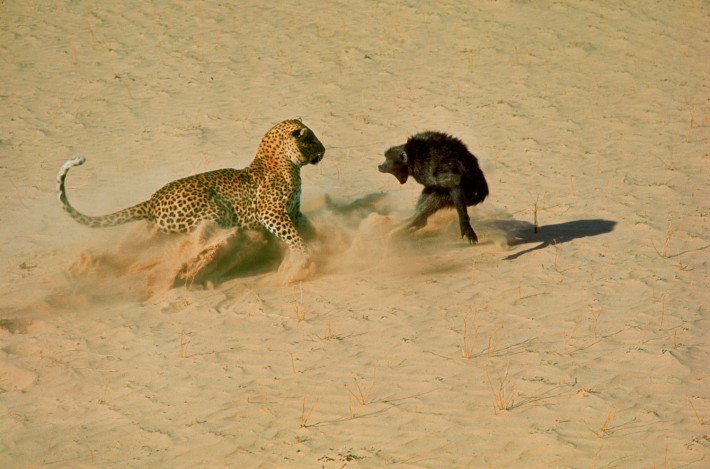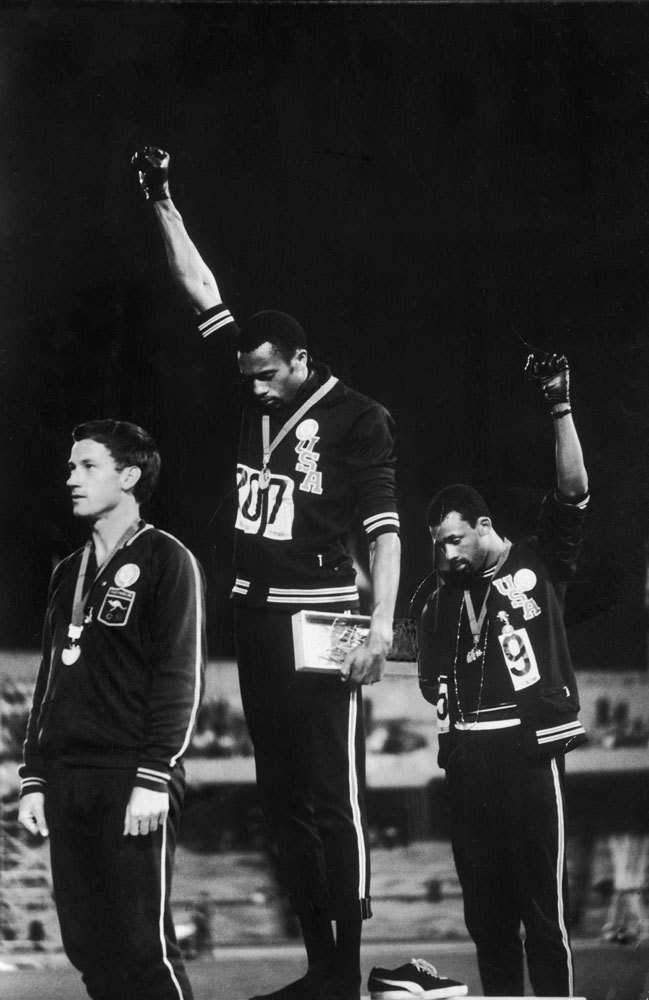Last week John Dominis, one of the most prolific photographers for LIFE Magazine, passed away aged 92. His work was celebrated not just for the strength of his image making, but because of the sheer breadth of what he shot. Today, when we're told to "focus and specialize" let’s take a moment to look back and remember one of the most consistent and diverse photographers of the 20th Century.
Some photographers stick to one genre or discipline of photography and just become known for their focus in that area. These days we are told time and time again how important it is to specialize and not generalize across too many genres for fear of being a 'diluted brand'.
John Dominis was cut from a different cloth. He was a photographer who could put his eye to seemingly anything and walk away with a strong image, and it served him well. While I feel his sensibility lent itself to a photojournalist and documentary background, as you'll see, he could shoot a myriad of different subjects and create strong, fascinating images.
 Dancer Jacques D'Amboise and his children, 1962
Dancer Jacques D'Amboise and his children, 1962
 This Argentinian matambre and the cutaway shot show real creativity in his food photography, 1966
This Argentinian matambre and the cutaway shot show real creativity in his food photography, 1966
He spent months in Africa in 1966 covering a LIFE feature “The Great Cats of Africa”. During this time he captured one of his most memorable – and controversial – images, a leopard just seconds away from killing a terrified baboon. The image is without question one that reminds of of the power of photography - to capture raw emotion and to freeze time to allow both our eyes and our minds to ponder what we see and to draw us in. It also reminds of a different time, when there was no second thought given to setting up a shot like this and using the animals in this way.
 Leopard about to kill a baboon, Africa, 1966
Leopard about to kill a baboon, Africa, 1966The controversy came later, when it was discovered that rather than this being a singular, natural event unfolding, that these shots were actually staged. In John Loeongard’s book, “LIFE Photographers, What They Saw”, Dominis said this about the leopard with baboon image:
"I certainly wasn’t a cat expert, but I could hire people who knew things. They’d lined up a hunter in Botswana, who was a hunter for zoos. He had caught a leopard, and he put the leopard in the back of the truck, and we went out into the desert. He would release the leopard, and most of the time the leopard would chase the baboons and they would run off and climb trees. I had photographed all this. But for some reason one baboon … turned and faced the leopard, and the leopard killed it. We didn’t know that this was going to happen. I just turned on the camera motor, and I got this terrific shot of this confrontation.
There was a different feeling about that in the 1960s. We were always setting up pictures…. But now there are many, many more competent photographers doing this stuff over long periods of time — four or five years if a scientist is on a big study…. No one was working that way then. I felt that my job was to get the pictures…. We shot a gazelle and put it in a tree and waited for a cat to come. I didn’t feel bad about it at all. It sounds terrible now, I know, and maybe my attitude would be different now…. I’ve been criticized a lot. But to me, I had to do what I did."
Dominis was equally at home as a war photographer (covering World War II as an army photographer and later covering the Korean War) as he was covering the hippy/peace movement by photographing Woodstock, of which he said:
“I really had a great time,” Dominis told LIFE.com, decades after the fact. “I was much older than those kids, but I felt like I was their age. They smiled at me, offered me pot … You didn’t expect to see a bunch of kids so nice; you’d think they’d be uninviting to an older person. But no — they were just great!
“I worked at LIFE for 25 years, and worked everywhere and saw everything, and I’ve told people every year since the Woodstock festival that it was one of the greatest events I ever covered.”
 Rifleman under fire, Korea, 1951
Rifleman under fire, Korea, 1951 Woodstock, 1969
Woodstock, 1969
He photographed some of the most famous people in the world at the time, including Muhammed Ali, Sinatra, The Beatles, Steve McQueen and JFK.
 JFK in Mexico, 1962
JFK in Mexico, 1962 Steve McQueen with his wife at home in California, 1963
Steve McQueen with his wife at home in California, 1963 Steve McQueen unwinds at home, 1963
Steve McQueen unwinds at home, 1963 The Beatles, 1964
The Beatles, 1964 Mickey Mantle, 1965
Mickey Mantle, 1965 Sinatra in Vegas, 1965
Sinatra in Vegas, 1965 Ali, after fighting Sonny Liston in Maine, 1965
Ali, after fighting Sonny Liston in Maine, 1965 Dustin Hoffman and his wife, captured in the back of a New York taxi, 1969
Dustin Hoffman and his wife, captured in the back of a New York taxi, 1969 John Wayne enjoys a quick rest during filming of "The Undefeated", 1969
John Wayne enjoys a quick rest during filming of "The Undefeated", 1969He had an amazing ability to be there, but almost not be there, and captured some truly unique shots of some of the biggest stars of the era, including Steve McQueen who was well known for his disdain for intrusion. When asked how he won McQueen over and got him to relax with him constantly around he said:
"When I was living in Hong Kong I had a sports car and I raced it. And I knew that McQueen had a racing car. I rented one anticipating that we might do something with them. He was in a motorcycle race out in the desert, so I went out there in my car and met him, and I say, ‘You wanna try my car?’ We went pretty fast — I mean, as fast as you can safely go without getting arrested — and we’d ride and then stop and trade cars. He liked that, and I knew he liked it. I guess that was the first thing that softened him."
Undoubtedly the image that you will probably know Dominis from is that of Tommie Smith and John Carlos in the 1968 Olympics, both proudly standing on the winners podium, both with a gloved fist held aloft, a sign of solidarity with the growing black power movement back in the US at the time.
 Tommie Smith and John Carlos raising their fists in perhaps the most iconic image of Dominis's career, 1968
Tommie Smith and John Carlos raising their fists in perhaps the most iconic image of Dominis's career, 1968Testament to how even someone like Dominis, with all his experience of covering major and significant world events, can at times underestimate the full potential or strength in our images, he said,
“I didn’t think it was a big news event. I hardly noticed what was happening when I was shooting.”
Mr. Dominis later dismissed his black-and-white picture as “not much of a photograph.” But it made the protest an indelible part of the iconography of the tumultuous 1960s.
Through the 50’s, 60’s and early 70s he travelled the globe shooting for LIFE magazine – and he truly loved what he did. It is interesting to read back about a time when budgets and opportunities for great photographers who shot for magazines like LIFE seemed almost endless.
“The great thing about working with LIFE,” Dominis once said, “was that I was given all the support and money and time, whatever was required, to do almost any kind of work I wanted to do, anywhere in the world. It was like having a grant, a Guggenheim grant, but permanently.”
Fortunately for us all, Dominis seemed to realize how lucky he was, and made the most of it, bringing to the world some incredibly memorable and fascinating images through the latter part of the 20th century.
Image Credits [John Domonis]







What a way to go.
"These days we are told time and time again .... [yet] John Dominis was cut from a different cloth...."
Dave, your intriguing and kind homage pulled me right in and I read every word. Keep up the excellence.
As for the images themselves, I easily agree: "He was a photographer who could put his eye to seemingly anything and walk away with a strong image, and it served him well."
Thanks for the nice words Sean, glad you enjoyed the article :)
Dominis was a wonderful guy.. super creative in the age of photography when you have NO IDEA by looking at the back of your camera if you had a picture or not. Think about that....